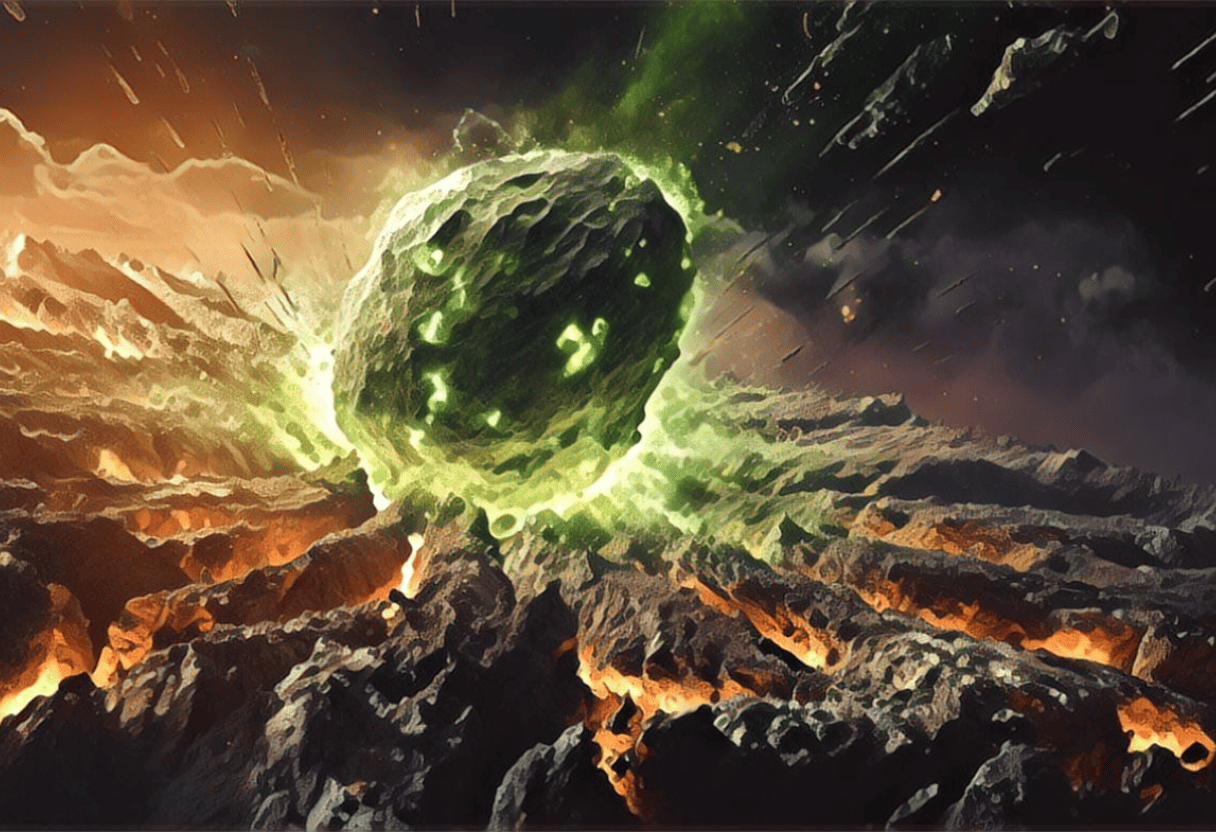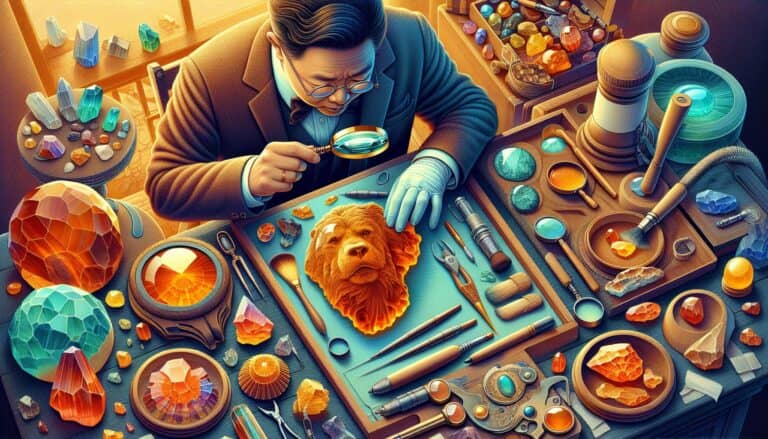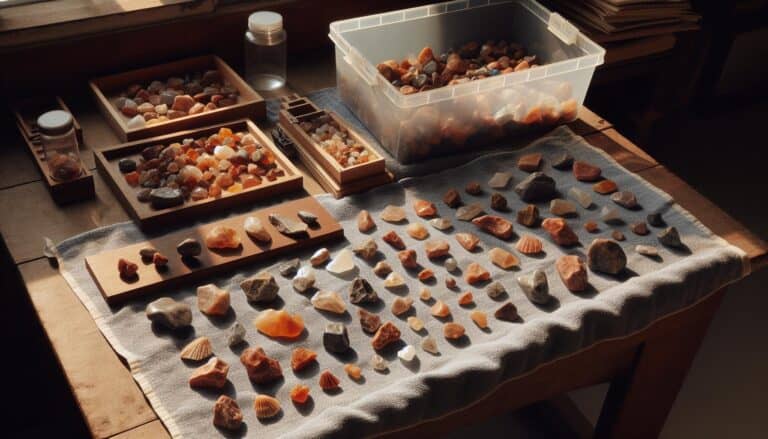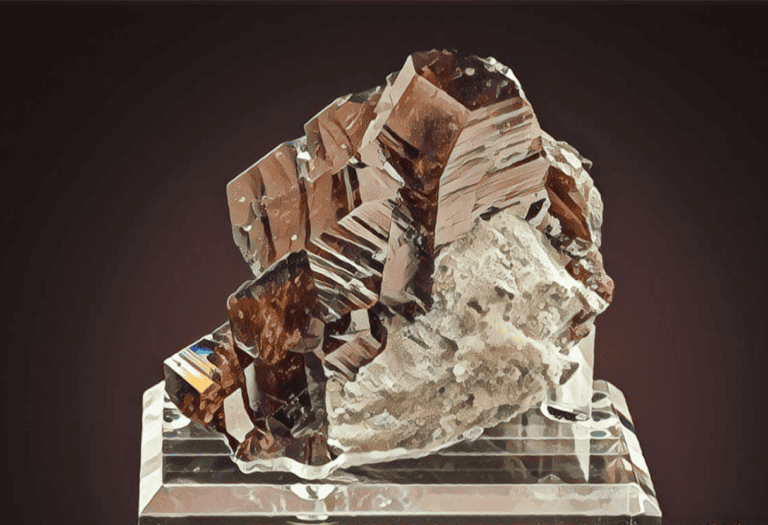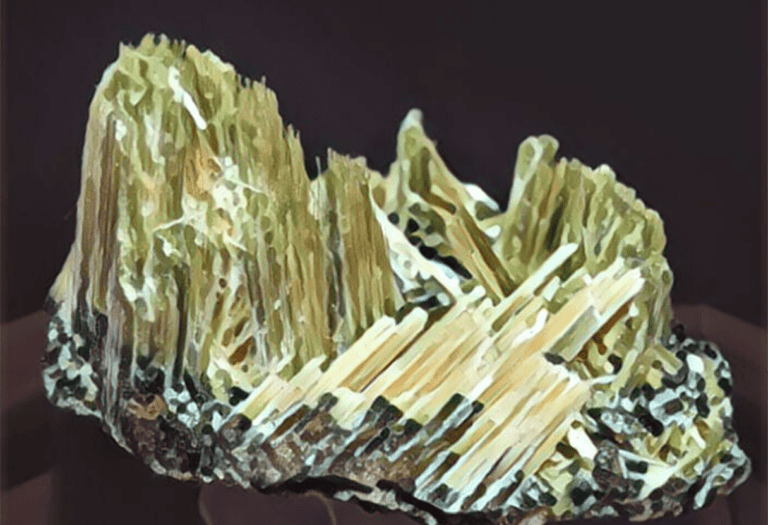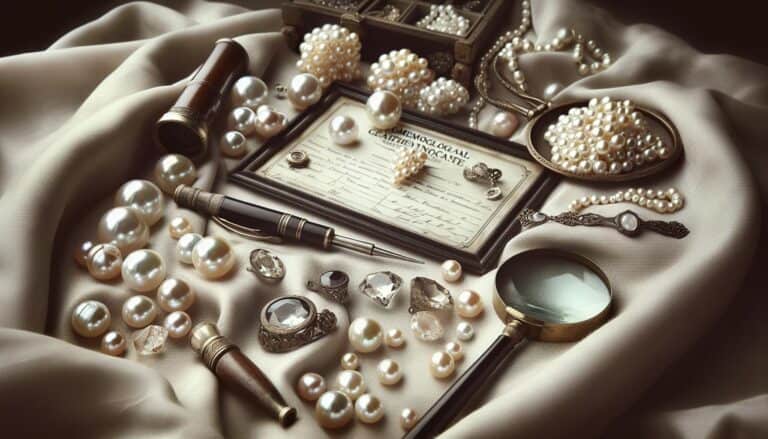Ever wondered about the value of that mesmerizing green gemstone called Moldavite?
You’re not alone!
As a unique tektite formed from a meteorite impact, Moldavite’s otherworldly origins have captivated collectors and enthusiasts alike.
Determining Moldavite’s worth can be as intriguing as the stone itself. It’s not just about size or weight; factors like color, clarity, and even the stone’s history play a significant role in its value. Let’s dive into what makes Moldavite’s value truly out of this world.
Moldavite’s value is influenced by color, clarity, size, and provenance. Deep green, clear Moldavites are most valued, especially larger, well-preserved specimens. Rarity and demand in the market also play a significant role. Authentic, high-quality pieces command premium prices, but beware of prevalent fakes in the market.
Factors that Determine Moldavite’s Value
When it comes to precious stones like Moldavite, it’s important to understand that several key factors directly influence their market value. Here, I’ll delve into the specifics that aficionados and collectors consider when they’re gauging the worth of this tektite.
First off, color is a major determinant. Moldavite’s hue ranges from pale to deep forest green, and the most sought-after pieces are those with a vibrant green shade that’s neither too dark nor too light. The richer the color, the higher the price it can command.
Another crucial aspect is clarity. While Moldavite naturally has some inclusions, the fewer there are, the more valuable the stone. High clarity Moldavites that are nearly free of visible inclusions are rare and, as a result, fetch higher prices.
The size and shape of the stone also matter considerably. Larger specimens with an attractive shape and good symmetry are particularly valuable. However, it’s worth noting that size alone doesn’t determine value—quality must accompany it.
Pieces with a special historical provenance or those that come from a particular location known for yielding high-quality Moldavite can also have increased value. Collectors prize such pieces, and they’re often willing to pay a premium for stones with a verified and fascinating backstory.
Quality of cut is yet another factor that affects Moldavite’s value. A skilled cut can enhance the stone’s natural beauty and alter its play of light, making it more desirable and valuable.
Let’s not overlook the role of authenticity. With the market flush with fakes, verifying that a Moldavite is genuine is paramount. Certified Moldavites that are guaranteed to be real and unaltered can see their value soar.
Understanding these factors can be crucial when you’re adding a piece to your collection or considering the sale of Moldavite jewelry or raw stones. Whether you’re a seasoned collector or new to the world of gemstones, remember that the worth of Moldavite is as distinctive as the stone itself. Knowledge of what to look for makes the pursuit as exhilarating as the find.
Size and Weight
When considering the worth of Moldavite, size and weight are crucial factors. Typically, larger Moldavite pieces are rarer and therefore more valuable. However, it’s not just about size alone—the overall quality must pair with the size to truly maximize value.
In the world of gemstones, size is often measured in carats, with one carat being equivalent to 0.2 grams. Moldavite, like other gemstones, increases in price exponentially with size, especially for specimens over 5 carats. These larger pieces are not just sought after by collectors but also by those looking to make a statement with their jewelry.
| Carat Range | Approximate Value Increase |
|---|---|
| 1-5 | Moderate |
| 5-10 | High |
| 10+ | Premium |
It’s important to keep in mind that while heavier and bigger pieces may fetch higher prices, the appeal of a Moldavite isn’t solely based on its weight. Aesthetic appeal plays a significant role, too; a smaller, more visually striking piece can sometimes be worth more than a larger, less attractive one.
Interestingly, the law of supply and demand plays into the valuation of Moldavite sizes as well. As demand for sizable Moldavite grows, the supply dwindles, pushing the prices higher. With the diminishing availability of large quality pieces, prices are likely to continue trending upwards.
One should not overlook the form and condition of Moldavite. Natural, unaltered pieces with minimal chips or scratches are preferred. Specimens that have naturally smooth surfaces and maintain their original shape often get higher prices than those that have been cut or polished, as they represent Moldavite in its purest form. Collectors and enthusiasts alike pay top dollar for such pristine examples, as they encapsulate the authentic beauty of this cosmic gemstone.
Color and Clarity
When evaluating Moldavite, collectors and enthusiasts alike pay close attention to its color and clarity. These factors significantly influence the gemstone’s value and appeal. Generally, Moldavite exhibits a green hue, which can range from pale to rich forest green. The most sought-after shade is a deep, vibrant green that’s both intense and pleasing to the eye. It’s not just the richness of color that matters; the uniformity of the color throughout the crystal also adds to its worth.
Clarity is another critical aspect, though it’s worth noting that natural Moldavite will often have inherent bubbles and inclusions. While too many inclusions can lower the stone’s desirability, some collectors actually seek out pieces with unique internal structures. The presence of these features adds character to the stone and can tell a story about its formation and history. Additionally, stones with fewer inclusions and exceptional transparency are rare and command high prices on the market.
In the realm of semi-precious stones, the depth of color paired with the clarity or inclusion patterns makes each Moldavite piece distinct. Therefore, when I assess a specimen, I consider how these traits impact the overall aesthetics and the emotions they evoke.
Moreover, as fakes and synthetics flood the market, the authenticity of Moldavite’s color and clarity becomes even more crucial. Authentic stones will have a natural, uneven color distribution and contain tell-tale signs of their meteoric origin. Understanding these nuances is vital for anyone looking to invest in Moldavite.
In the world of Moldavite, just as with any gemstone, there are grading scales available that help categorize these stones according to their color and clarity. These guidelines are essential for standardizing Moldavite’s value and help buyers and sellers arrive at a fair price. However, as with any natural specimen, there will always be a subjective element to gauging its true worth.
Origins and History
Moldavite’s beginnings are as dramatic as the stone itself – it is the product of a meteorite impact that occurred approximately 15 million years ago. This celestial event, known as the Ries impact, gave birth to the tektite strewn field that covers parts of the Czech Republic today. What sets Moldavite apart from other tektites is its unique green color and its location; it’s found only in this particular area.
As I delve into its history, it’s clear that Moldavite has been more than just a pretty stone; it’s woven into the fabric of human history. The Neolithic peoples of Eastern Europe held Moldavite in high regard, fashioning it into amulets and talismans. Its allure persisted through the ages, with even nobility in the Renaissance period seeking out its beauty and purported mystical properties.
The age of Moldavite coupled with its rich history adds layers to its worth. Collectors and historians prize specimens that offer a direct link to the distant past. The opportunity to own a piece of the earth’s ancient history is not just valuable; it’s irreplaceable.
The allure of Moldavite goes beyond its extraterrestrial origins and historical significance. During the late 20th century, interest in the metaphysical properties of crystals propelled Moldavite to new heights of desirability. It’s now often featured in jewelry and as a collectible item for both its aesthetic and reported energy-conducting abilities.
My deep dive into its origins reveals that while Moldavite’s value fluctuates with market demands, its story remains unchangingly fascinating. I’ve learned that any comprehensive evaluation of its worth will inevitably take into account the rich tapestry of its celestial birth and its journey through human history. It seems Moldavite isn’t just a mineral to be studied—it’s a narrative, spanning millions of years, still unfolding in the hands of collectors around the world.
The Influence of Market Demand
Market demand plays an integral role in the valuation of Moldavite. Like any other gem, Moldavite’s worth fluctuates with trends in popularity, availability, and consumer interest. In recent years, there’s been a noticeable surge in demand for this tektite, partly driven by its prominence in new age and metaphysical circles.
The value is also affected by the rarity of the stone. As a result of this increased demand and limited supply, prices for Moldavite have soared. There’s a growing market for Moldavite jewelry and unprocessed stones among collectors and enthusiasts. Moreover, the internet has played a pivotal role in globalizing the market, making Moldavite accessible to a broader audience, which in turn, drives up its price.
Here’s how the demand for Moldavite has impacted its value:
- Smaller Specimens (1-5 Grams): Prices for these have risen significantly, with some stones costing upwards of $10 per gram.
- Larger Specimens (Above 5 Grams): These are even more desirable and can fetch hundreds of dollars depending on the size and quality.
Moldavite’s price is not just about mass and availability. The stone’s aesthetic qualities, such as color, clarity, and cut, contribute to its value. Pieces with a rich, deep green hue and translucence command higher prices. Additionally, well-cut Moldavites that enhance the stone’s natural luster and appeal are particularly prized in the gem market.
Despite its growing popularity, it’s essential for buyers to be wary of fakes. The market has seen an influx of imitations due to the high value of authentic Moldavite. It’s my recommendation to always verify the authenticity of the stone through reputable dealers, which can also influence the price directly. Authenticity certificates and transparent sourcing can raise the value of the stone, ensuring buyers they’re getting the real, historic tektite they’re paying for.
The fascination with Moldavite is showing no signs of waning. With every new generation of enthusiasts and the finite nature of its supply, the market demand for Moldavite is poised to keep its worth on an upward trajectory.
Conclusion: Buying & Selling Moldavite
Understanding Moldavite’s worth is paramount in today’s market where demand drives value. My deep dive into its popularity and rarity underscores the stone’s increasing prices. As I’ve navigated the nuances of Moldavite’s appeal, it’s clear that aesthetic qualities significantly influence its valuation.
Yet, with the prevalence of fakes, it’s essential to approach purchases with discernment. Looking ahead, I’m confident Moldavite will continue to captivate and hold its allure in the world of precious stones, keeping its value steadily climbing.
Whether you’re an avid collector or a newcomer to the gem market, Moldavite’s unique charm is something to watch.

